When you think of Guinea, you might picture a least visited country with a bad reputation. However, after spending a week exploring Guinea Conakry, my view has completely changed. This incredible country truly exceeded my expectations in every way.
From the friendly people to the best scenery in West Africa, including an epic waterfall that took my breath away, there’s so much to fall in love with here. Unlike the sour time I had in Guinea-Bissau, my experience in Guinea was a mind-blowing adventure in a good way.
The delicious local food is just another reason to visit. This is a place that deserves to be known for all the right reasons, and I can’t wait to go back again.
“Traveling silences you with awe, then transforms you into a storyteller.” – Ibn Battuta
Why Guinea Conakry’s Reputation is Misleading
One of the reasons Guinea (Conakry) has earned a bad reputation is the corruption and problems travelers face when journeying here. Overland travel into Guinea is tough, with 14+ hours of driving on terrible roads. During the dry season, these roads are harsh, but when the rainy season arrives, they turn into a pig’s paradise, making the journey even harder.
Add in police stops and bribes, and the road to Conakry feels endless, but you’ll make it through eventually. Once you arrive in Conakry, you’ll face the reality of worst traffic, especially with just two main roads. And don’t trust Google maps—their time estimates are far from accurate.
It’s all part of the fun of traveling in West Africa, but ain’t over just yet—the adventure has only just begun.
similar to the road trips you might encounter in other parts of the world. For a different perspective on road travel, take a look at this 8-Day Road Trip Itinerary through Croatia.
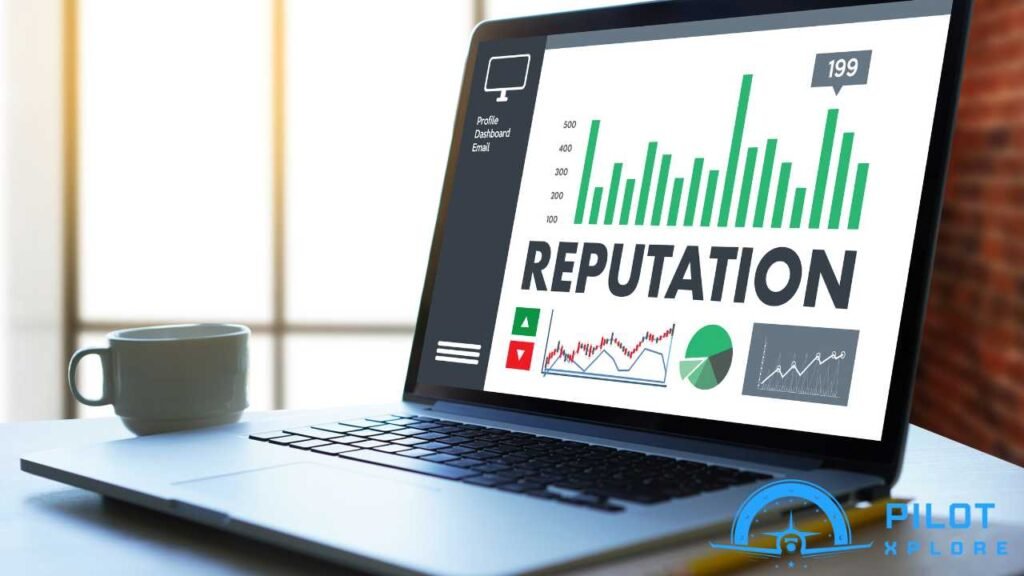
How to Make Overland Travel to Guinea Conakry More Bearable
Traveling into Guinea by land may seem like one of the greatest physical and mental challenges you’ll undertake, but it doesn’t need to be a complete nightmare. With a couple of tips, you can alleviate the bulk of the pain that often associated with the journey.
Traveling through Guinea can be a tough experience, but if you’re prepared, it turns into a rewarding adventure rather than a stressful ordeal. Make sure to plan ahead to avoid the common challenges and make your trip more enjoyable..
| Tip | Why It’s Important |
| Travel with plenty of snacks | Long road trips can be tiring. Keep your energy up! |
| Carry extra water | Hydration is key, especially in the heat. |
| Be prepared for unexpected stops | Police check stops can be frequent and lengthy. |
| Plan for long delays | Patience is key due to bad roads and traffic. |

Private Transportation in Guinea – Pros and Cons
Private transportation can reduce the headache of traveling across countries and borders, but it’s not a perfect solution. While it may be very costly, it can provide some comfort like air conditioning, windows closed, and protection from the dust. However, it doesn’t eliminate the corrupt police who might go through your suitcases, and it won’t smooth out the potholes on the road.
You also avoid the discomfort of being crowded into a hot, smelly, old van with 10 people, but there’s still the issue of saving time, like when you have to avoid switching vans, waiting for them to fill up, or taking mototaxis.
“The most rewarding journeys are the ones that provide answers to questions you never even thought to ask.” – Rich Ridgeway
Why Flying to Guinea is the Best Option for Travelers
Flying into Guinea is definitely the much easier and headache-free option compared to traveling by land. You can fly with Ethiopian Airlines on a Boeing 787 straight to Conakry International Airport, which is located in a great spot near the corniche, making it easy for locals to use as a reference point for directions.
West African corruption, which you might encounter on land, doesn’t seep as much into the airport experience, unlike what we had in Bissau. The costs of private transportation and flying are probably not so different, but flying saves you from the loss of prized possessions at corrupt police stops.
Once you arrive, obtaining a Guinea E-Visa online is simple and quick, with a response the next day (though my partner’s visa was denied a few times due to image upload issues).
After arriving and getting stamped in, you can easily head to the Visa on Arrival booth, where they take your picture and fingerprints and issue you a Multiple Entry visa that lasts a couple years. It’s all super easy.
If you are looking for tips on how to fly more comfortably, be sure to read How to Avoid Middle Seats by an Airline Pilot
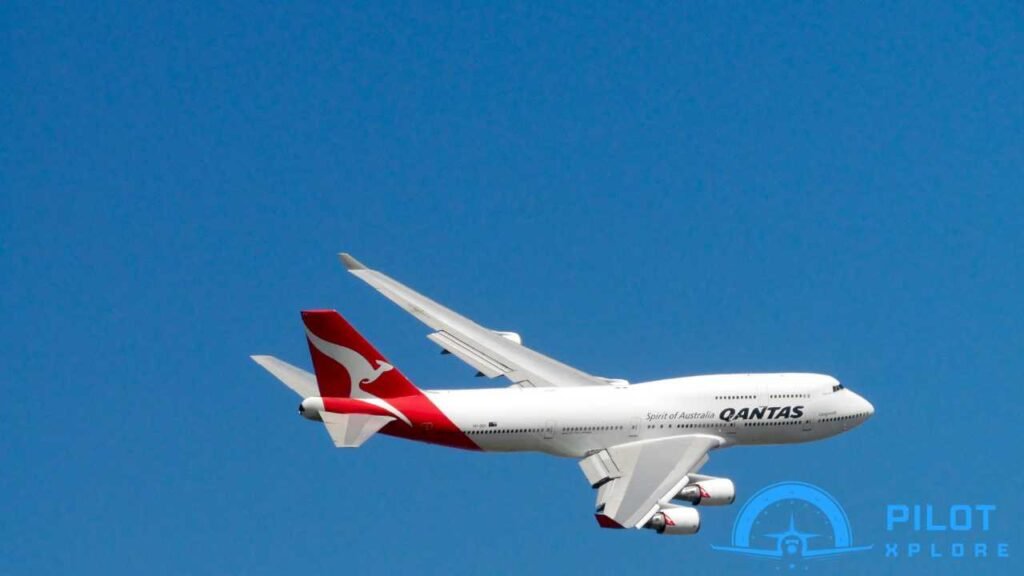
What to Do in Guinea Conakry – Top Attractions to Visit
Before dismissing Guinea as a remote or overlooked destination, give it a fair chance. Since tourism in Guinea is still in its early stages, popular resources like Google, TripAdvisor, and similar travel platforms might not be very useful here.
That means you’ll need to rely on local recommendations and word of mouth—just like people used to do. Time to get social! But if you’re more of an introvert like me, don’t worry—here are some of the top places to explore in the stunning country of Guinea.
1.Exploring Downtown Conakry and the Kaloum District
In Conakry, the capital of Guinea, you’ll find a busy and crowded area full of local markets where you can really learn about the daily life of the locals and embed yourself in the local culture. The city is a complex mix of artisans selling homemade furniture, residential areas with towering apartment buildings, and mototaxis rushing by along with old French taxi cars.
Expect traffic jams as they are part of the experience. The traditional center of Kaloum has many hotels and restaurants, though it may feel less local compared to other parts of Conakry.
If you’re after a more authentic, laidback vibe, head to the residential area of Kipé, which offers a quieter and more relaxed experience. Kaloum and downtown Conakry offer plenty to visit and experience in this bustling urban area.
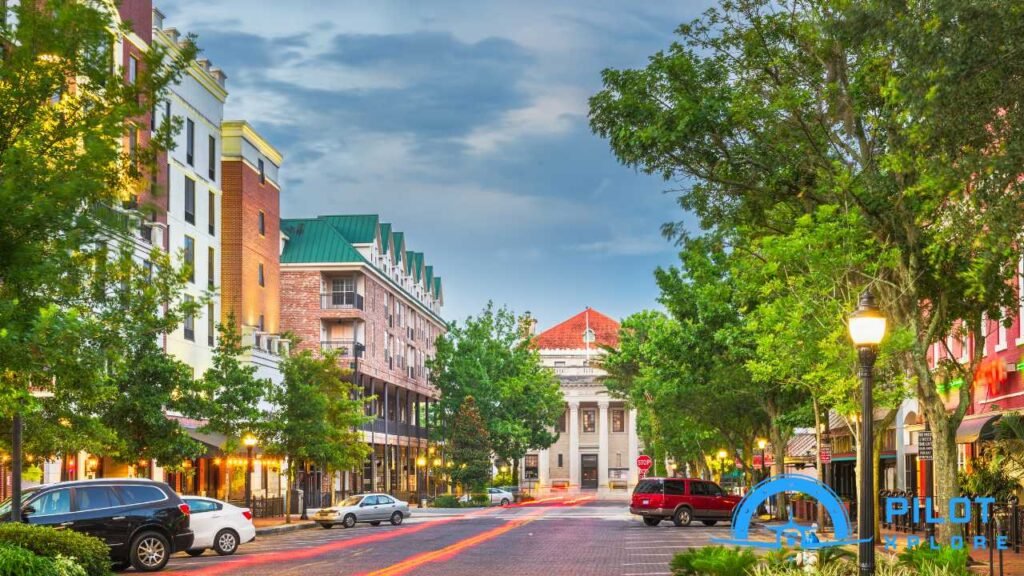
2. A Day Trip to the Islands of Los
The Islands of Los are a great day trip from Conakry, just a 30-45 minute boat ride from the Kaloum district. These islands are a local favorite, especially over the weekend, offering a laidback, fishing-town feel with amazing seafood.
While these dazzling islands have a beautiful atmosphere, they also have a sad history. They were important during the slave trade era, and were used as a prison, boat repair factory, and even inspired Treasure Island.
To get there, you can take a pirogue, a small wooden canoe with an engine, to visit Roume, Tamara, or Kassa. The price for a private pirogue round trip is typically between 700K-1.5M GNF ($65-140 USD), and you may need to negotiate the cost.
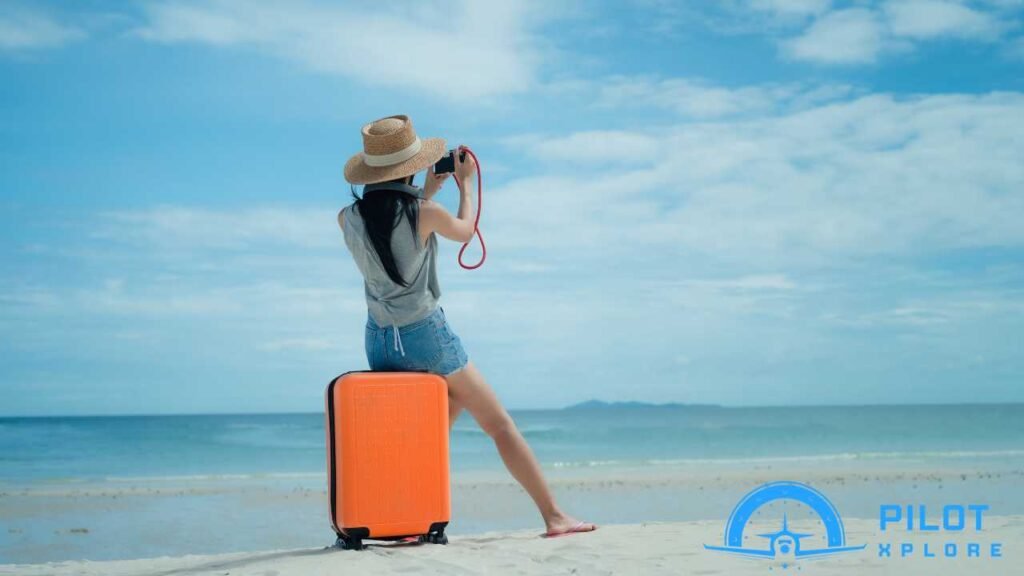
3. Discovering the Vibrant Markets of Conakry
When visiting Conakry, the markets are where you truly experience the pulse of the city. The bustling and buzzing atmosphere, combined with the warm and vibrant locals, make shopping here a one-of-a-kind experience.
Unlike the typical markets with thousands of identical products imported from places like China, the markets in Conakry offer something much more authentic. They primarily house high-quality, local crafts, furniture, and art, all at reasonable prices.
If you’re in the market for incredible handiwork, places like Le Bambou in Kipé will blow you away with its intricate woodwork, including chairs, masks, and decorations that are truly works of art.
For a deeper insight into local life, head to Marché Madina, where you can avoid the touristy products and get a real sense of how people live in Guinea. For stunning wooden furniture, including headrests, nightstands, and couches, Maison du Meuble is the perfect spot to find the finest pieces.
If you’re looking for a more crowded, busy market, Kobayah Marché offers an exciting mix of small goods, snacks, and colorful clothing.
Finally, for a truly local experience, head to Makity in Lambagui for fresh fish and crab, where the vibrant flavors of Guinea await. These markets are more than just places to shop—they’re an essential part of your Guinea experience.
If you’re interested in exploring more vibrant destinations, take a look at Belize – 10 Things You Need to Know Before Traveling There

4. The Beautiful Soumba Cascades and Surrounding Mountains
Just a couple of hours outside Conakry, you’ll discover the breathtaking Soumba Cascades—an ideal destination for a quick and memorable day trip. After roughly a 1.5-hour drive from the city center, you’ll arrive at these scenic waterfalls, set against a dramatic backdrop of volcanic mountains that rise unexpectedly from the flat surrounding terrain.
Popular with locals on the weekends, it’s easy to see why this spot is a favorite—it’s perfect for unwinding and taking a refreshing dip. Nearby, a second cascade just outside the village of Soumba offers a more secluded experience, complete with natural rock pools and carved stone seating right beneath the falls—an ideal hideaway to relax in peace.
This hidden gem can be found at coordinates N 9°47’08.7″, W 13°28’25.5″. For just 25,000 GNF per person (around $2.50), it’s a great way to spend an afternoon. After your visit, consider stopping by the local market to pick up some snacks and take in the serene countryside on your way back.

5. Relaxing at the Beaches of Bel-Air
The beaches in Bel-Air are a stunning place to visit, with beautiful palm trees and volcanic sands that make it unique. As you travel down the road towards Guinea-Bissau, you’ll pass through the quaint town of Bel-Air, known for its fabulous beaches.
The area is lined with local hotels and seafood-serving restaurants, perfect for unwinding after an adventurous day.
Bel-Air is a great spot to relax, but if you’re craving more excitement, head to Kamsar, where you can hire a local pirogue or canoe to explore the river and try your hand at fishing. It’s an ideal location for both relaxation and adventure.
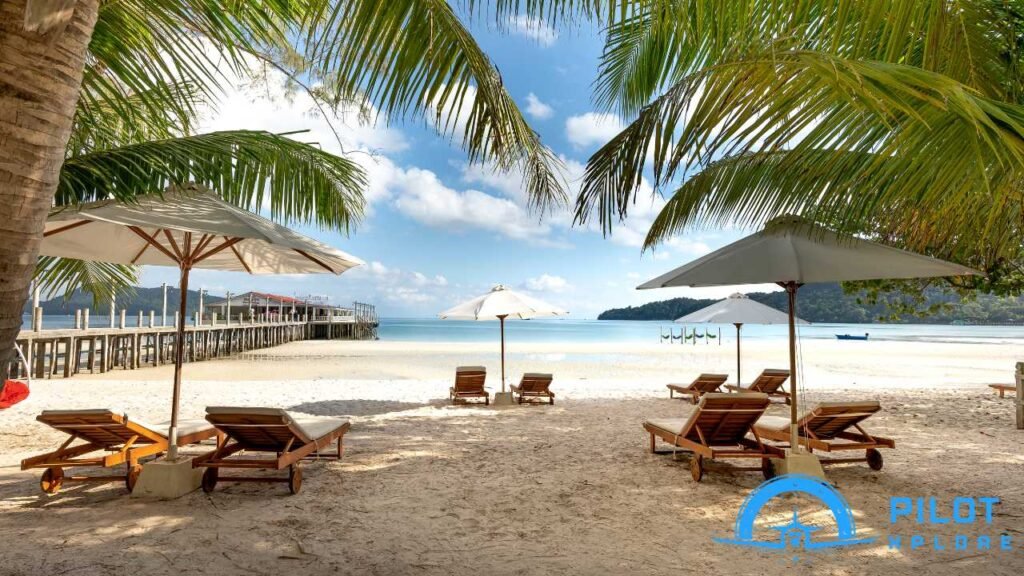
Where to Stay in Conakry: Best Accommodation Options
Conakry, one of the least visited countries on the planet, hosts a plethora of great hospitality options. Whether you’re looking for luxurious 5-star resorts or cheap local B&B’s, there’s something for every type of traveler.
I found a few of my favorites during my stay, each offering a unique experience, whether it was the high-end comfort of a resort or the cozy charm of a local bed and breakfast
. Conakry really surprised me with its variety of accommodation choices, making it an ideal destination for all types of travelers.
| Hotel Name | Price Range (per night) | Features |
| Sheraton Grand Conakry | $200 – $350 | 5-Star luxury, pool, sea views |
| Hotel Petit Bateau | $50 – $100 | Budget-friendly, central location |
| Maison D’Aceuil | $17 – $25 | Affordable, basic amenities |
Best Luxury Stay in Conakry: Sheraton Grand Conakry
The Sheraton Grand in Conakry stands out as one of the finest 5-star hotels in the city. Its spacious balconies offer stunning views of the sea, making it an ideal spot to unwind. With top-tier amenities like a pool, spa, and on-site restaurants, it delivers a truly luxurious experience. Although it carries the Royal name, the prices remain surprisingly reasonable—giving you a taste of luxury without the hefty cost. For those seeking comfort and elegance in Conakry, the Sheraton Grand is a top pick.
Top Mid-Range Hotel in Conakry: Hotel Petit Bateau
If you’re looking for the best price:quality in Conakry, the Hotel Petit Bateau is hard to beat. It’s like a mini-Sheraton on discount, offering a great balance between comfort and value. Located in an ideal location right on a jetty in downtown Kaloum, this hotel provides charming accommodation and excellent service.
The price:quality ratio here is truly impressive, making it a great choice for those looking to stay in Conakry without breaking the bank. You can find it listed on sites like hotels.com, where it stands out as one of the best options in the area.
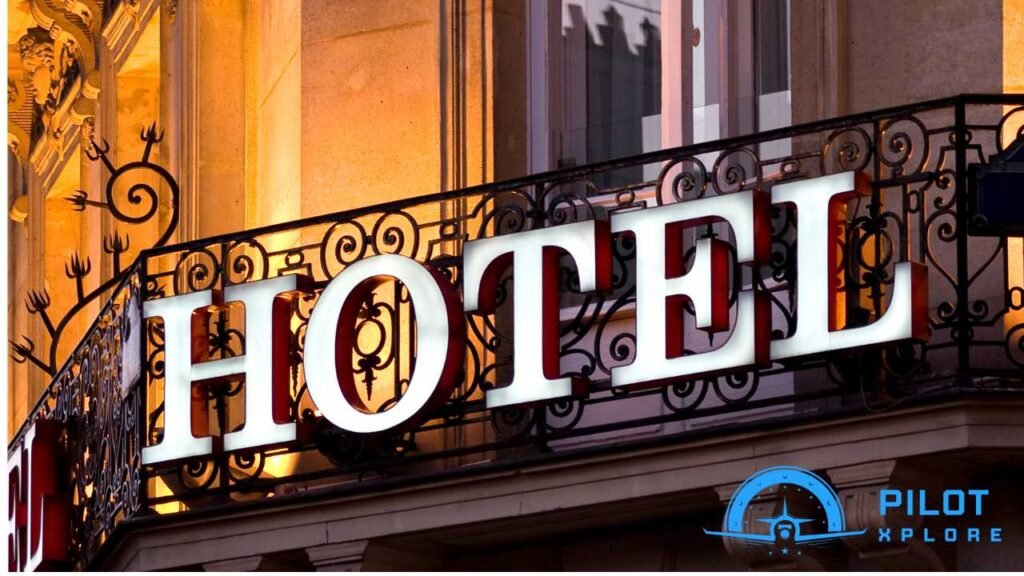
Best Budget Hotel in Conakry: Maison D’Aceuil
For travelers on a budget, Maison D’Aceuil is an excellent option in Conakry. At only $17 per night, it offers private rooms with showers and air conditioning, providing comfort at an affordable price.
It’s a great choice for those looking to keep costs low without sacrificing basic amenities.
Top Attractions Near Kindia, Guinea
Just a short ride from the capital of Conakry, you can reach Kindia, a small town in Guinea that’s located less than 4 hours away. While the town itself may not be terribly interesting, the nature around Kindia is spectacular.
It’s perfect for those who enjoy hiking, swimming, and exploring the great outdoors. Whether you’re taking a bike ride through the streets or venturing into the surrounding landscapes, there’s plenty of natural beauty to discover just outside the town.
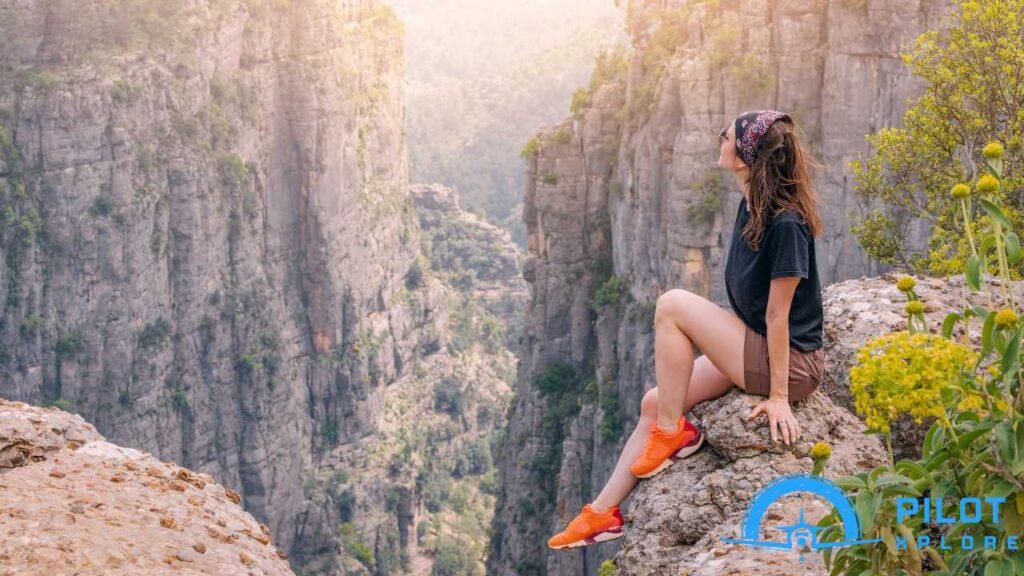
Discovering the Hidden Beauty of Bride’s Vail Waterfall
The Le “Voile” de la mariée waterfall, located in Kindia, is often called a forgotten treasure. This long, thin waterfall is a great place to enjoy a picnic or even take a refreshing shower.
The site is an abandoned hotel, surrounded by beautiful forests of bamboo, making it an ideal spot to cool down on a hot day.
The natural beauty of this spot, along with its serene atmosphere, makes it a must-visit for anyone exploring Kindia. It’s truly a hidden gem, perfect for those looking for adventure or relaxation in Guinea. Fatoumata D captured this stunning scene under the CC BY-SA4.0 license.

Exploring the Majestic Kilissi Falls
Located in Kindia, Kilissi Falls is the bigger, madder waterfall in the area. It’s well-known and frequently visited due to its stunningly gorgeous cascade and natural swimming pool, making it a perfect spot to cool off.
Visitors can enjoy the falls while paying an entrance fee of 5000 GNF (around $0.50). For those who want to stay longer and fully enjoy the site, there is a cute hotel nearby offering private rooms.
It’s an ideal place for a relaxing visit surrounded by nature.
Top Accommodation Options in Kindia, Guinea
If you’re heading to Kindia, one great option is Les Eaux de Kilissi, located right by the waterfall. This charming spot lets you stay in a cute hut with a mosquito net over your bed, making for a comfortable and unique experience.
You can enjoy the soothing sounds of the jungle while you sleep, adding a peaceful touch to your stay. It’s an excellent choice if you want to immerse yourself in nature and get away from the bustle of the city.
Must-See Attractions Near Labe, Guinea
Labe is a cute town located in the midlands of Guinea, surrounded by impressive topography. It is a frequent stop for travelers coming from Guinea-Bissau to Conakry. After a long day of traveling by land, weary travelers can find a few hotels in the town to relax.
The town’s charm, along with its stunning natural surroundings, makes it a pleasant place to visit and rest. Photo credit: Nicolas Martin, CC BY-2.0.

Exploring the Stunning Kinkon Falls
When in Guinea, make sure to visit Kinkon Falls, one of the most spectacular falls in West Africa. Often called a must-see, this beautiful location is easily accessible for a day trip from Labe or Pita. You can hire a taxi driver for around 100-300K GNF ($10-30 USD) and negotiate the price.
Once you arrive, there’s a special viewpoint at the lower Kambadaga falls, where you can enjoy the stunning view. The hike to the falls is moderately difficult, especially on the way down, but it’s definitely worth it. Keep in mind that the hike can become treacherous during the rainy season, and it’s important to be careful.
Along the way, you’ll hear and see baboons, birds, insects, and other animals hidden in the dense tropical forests. It’s truly an experience you won’t forget. Photo CC BY-2.0: jbdodane.
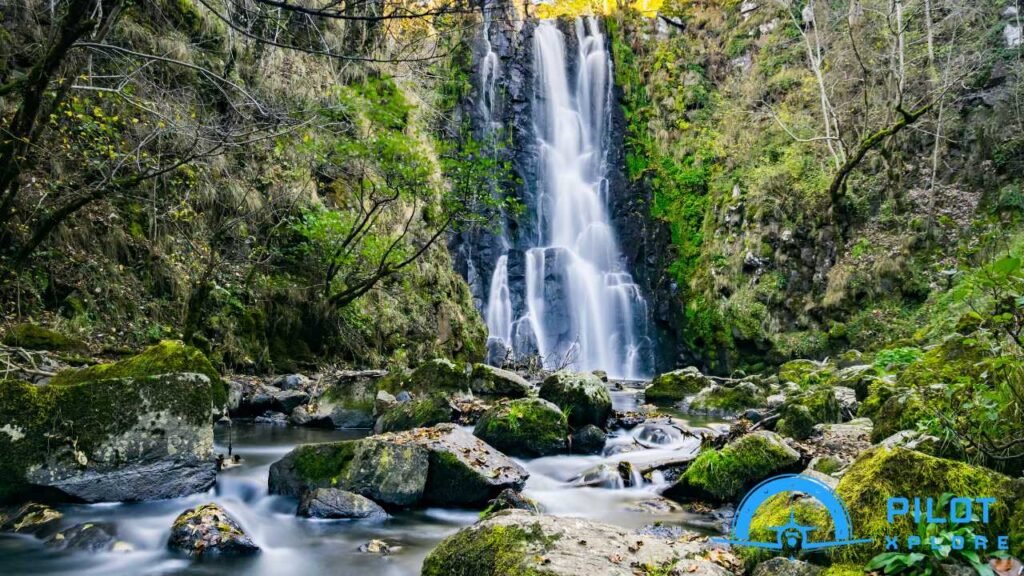
Discovering the Charm of Pita
Pita is a cute town surrounded by picturesque areas, making it one of the most beautiful spots in West Africa. It’s located just outside the Kambadaga waterfalls, offering a fantastic place to stay the night.
You’ll find restaurants, small markets, and cozy B&B’s where you can relax and enjoy the peaceful atmosphere, deeply immersed in nature. It’s the perfect spot to rest after a long day of exploring.
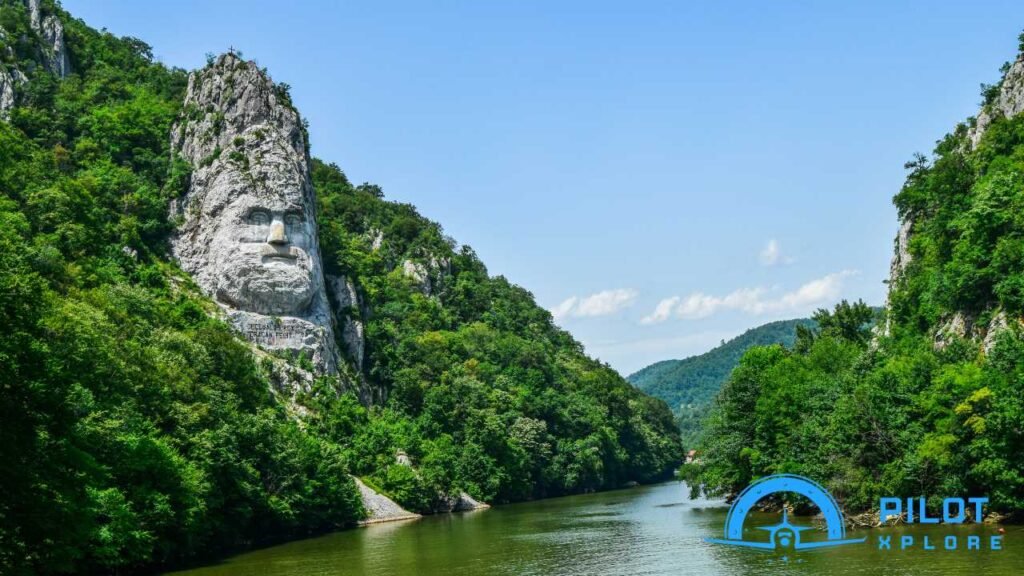
Visiting the Fascinating La Dame du Mali Rock Formation
La Dame Du Mali is a fascinating spot to visit, especially if you’re entering Guinea from Senegal. Situated near the border, this natural rock formation is often mistaken for being from Mali, though it’s not too far from there.
The striking jutting rock looks exactly like a lady, or “dame” in French (short for madame). It’s truly an interesting sight and a perfect place to stop and take a photo. Fatoumata D, with the photo under CC BY-SA4.0, captured this stunning piece of art.

Best Places to Stay Around Labe, Guinea
For a comfortable stay near Labe, Hotel Djamtum is a great option. Although there aren’t many places to stay around Labe, this hotel offers spacious and clean rooms, with the added bonus of hot running water.
Guests have left excellent reviews, especially praising the owner, Roger, for his warm welcome to the area. You can contact the hotel at +224620025530 for more details. It’s a solid choice for travelers seeking comfort in this part of Guinea.
Notable Sites to Explore Between Guinea and Liberia
If you’re planning to continue your adventure from Guinea, there are some highlights worth checking out between Guinea and Liberia. For those heading towards Sierra Leone, this area offers a few notable places to explore.
The journey is full of hidden gems that make it worth the visit. Whether you’re looking for nature or culture, there’s always something exciting around every corner. If you have a couple of days, it’s definitely worth it to continue your trip into these neighboring countries for even more unforgettable experiences.
Exploring the National Park of Upper Niger and its Rich Biodiversity
When you venture into the National Park of Upper Niger, you step into one of Guinea’s most protected and expansive reserves. This natural treasure stretches along the upper Niger River, covering miles of inlets, savannah, and lush forests.
This park offers a unique adventure for nature lovers, providing the chance to explore a biodiversity haven teeming with exotic wildlife. The park is home to rare species like giant forest hogs, pangolins, and even the elusive caracals.
You might spot chimpanzees, mongoose, and hares, all thriving in their natural habitat. The wildlife here is not just a sight to behold, but an essential part of the conservation efforts that keep this remote area protected.
One of the park’s most notable features is the vast Niger River, which extends through much of West Africa and serves as the lifeblood of this ecosystem. The park offers tourism experiences like safaris and eco-tourism tours, giving visitors the opportunity to connect with nature while supporting conservation initiatives.
Whether you’re looking for an exhilarating safari, capturing a photo of the stunning wildlife, or simply soaking in the natural beauty, the National Park of Upper Niger is a must-visit destination for any traveler in Guinea.
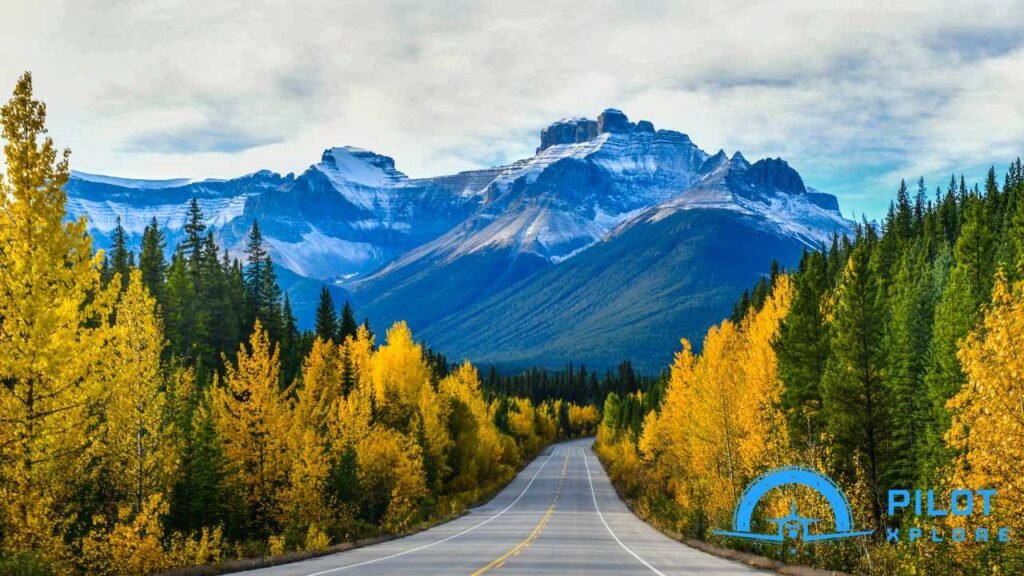
Hiking in the Majestic Nimba Mountain Range
The Nimba Mountain range, located at the border between Guinea, Liberia, and Côte D’Ivoire, offers some of the most fabulous views and dramatic landscapes. Rising to an elevation of over 1750 meters (5500ft), the cool and refreshingly cold weather is a perfect retreat for nature and wildlife enthusiasts.
As you trek through the hiking trails, you’ll be surrounded by lush green flora and encounter exotic species in their natural habitat. This place is ideal for an outdoor adventure, where wildlife such as fauna and species thrive in the protected ecosystem
. Whether you’re capturing a photo of the stunning views or simply enjoying the natural landscape, the Nimba mountains are a perfect destination for any nature lover seeking an unforgettable experience.

Pro Tips for Navigating Conakry’s Traffic and Getting Around
In Conakry, the best way to get around is by using taxis, which are very common in the city. Whether you choose a private or shared taxi, it’s an easy and affordable way to navigate the busy streets. Since Conakry doesn’t have official public transportation, visitors often rely on these taxis as the main means of transportation.
Although traffic can be tough, especially in the city center, taking a taxi is still one of the most convenient ways to move around town. Whether you’re in the mood for a quick ride or need to travel longer distances, taxis are a popular transportation option in Guinea.
For more on navigating your journey, read our Orlando Airport Layover Guide for travel tips
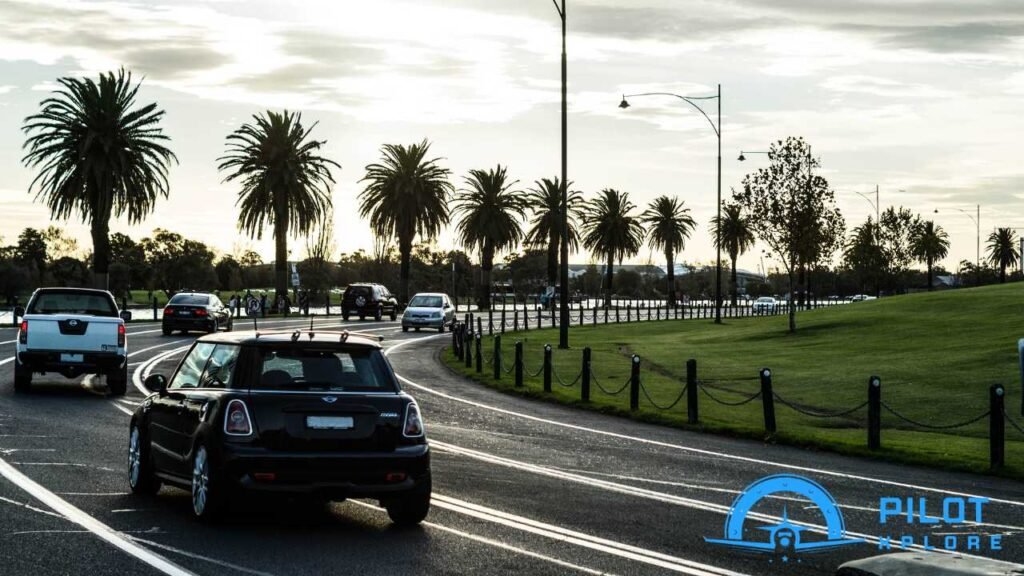
The Convenience and Fun of Mototaxis in Conakry
Mototaxis are probably the best and most fun way to get around Conakry. If you want a quick and easy way to travel through the bustling city, mototaxis are a popular local form of transport. They’re a cost-effective choice, offering fast movement and a convenient route to reach your destination.
While mototaxis are generally a more enjoyable and exciting mode of travel, they do come with some advantages and disadvantages.
They can be a great option for getting around, but keep in mind that the ride can sometimes be less comfortable compared to traditional taxis. However, for many visitors, mototaxis provide a memorable, quick, and fun way to experience the city.
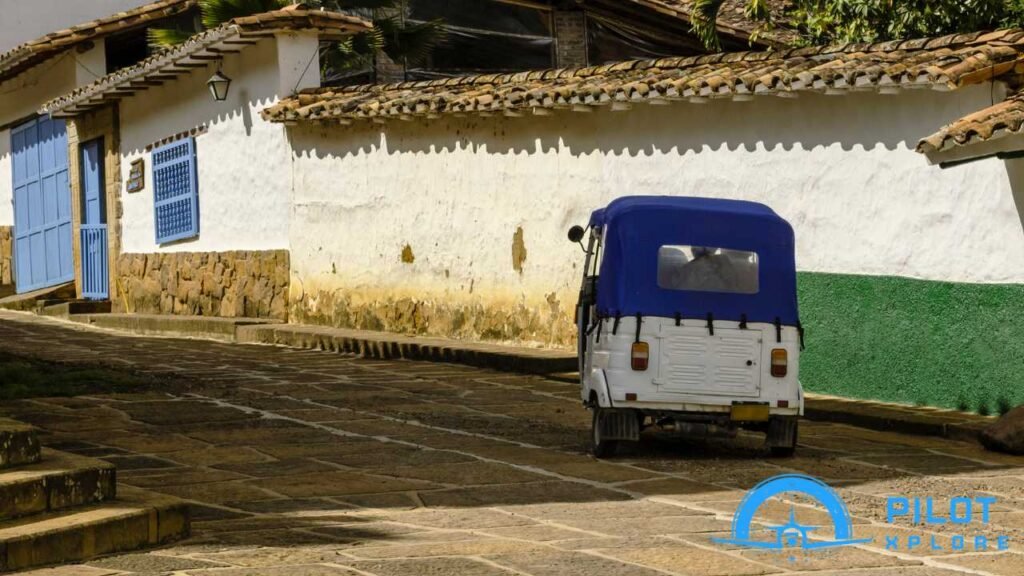
Mototaxi advantages:
Mototaxis are the cheapest and most cost-effective way to get around Conakry, offering quick and affordable transport.
They’re smaller and can navigate through traffic much quicker, making it easier to travel through the city.
Mototaxis are easy to find and provide a fast ride, making them a great option for getting around Conakry efficiently.
Mototaxi disadvantages:
- Routes are often limited, so you may need to take more than one mototaxi to reach your destination.
- Open-air rides expose you to hot, dusty, and sweaty conditions, making the experience uncomfortable.
- Mototaxis can get very crowded, especially during busy times, making it less ideal for a smooth trip.
Opting for Private Taxis in Conakry
If you’re looking for a more comfortable and quick way to get around Conakry, private taxis are a good choice. These taxis are usually artistically decorated and often repurposed, used European cars with noticeable wear and tear, but they still get the job done.
However, keep in mind that private taxis tend to be more expensive than regular ones. On average, a taxi ride costs about 25K GNF per person, which is roughly $2.50 USD. You might even pay more if you’re white or appear touristy.
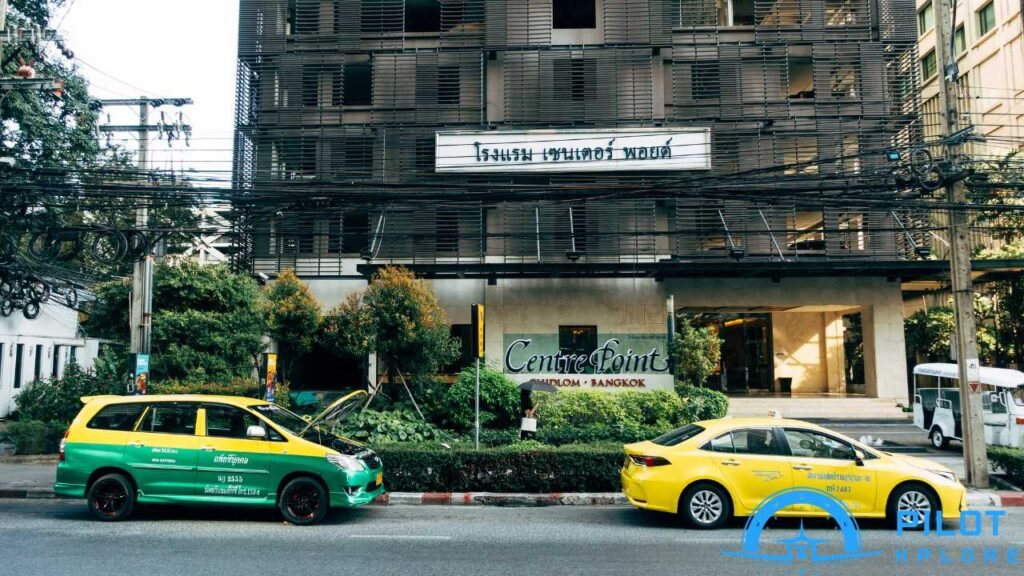
Affordable Travel with Shared Taxis in Conakry
If you’re looking for a cheaper way of getting around Conakry, shared taxis are a great alternative. These taxis work similarly to a public bus, traveling from one specific spot to another with various stops along the way. You split the cost with others, making it more affordable.
We were able to ride one for just 3K GNF per person (about $0.30 USD), but be aware that they do fill up quickly, especially during peak times.
Renting a Car in Conakry: What You Need to Know
If you’re considering getting around Conakry, another option is to rent a car. Rental cars usually cost between $60-100 USD per day, and you can find everything from a moto to a 4×4. While this gives you flexibility, keep in mind that these cars are often in bad condition, and driving in Conakry can be quite hectic, so it might not be the most relaxing way to travel.
Navigating Guinea: Transportation Tips for a Safe Journey
Getting around Guinea can feel daunting and complicated, especially if you’re not familiar with the local ways of transport. One unique method of travel is using local fishing boats, called pirogues, which are a common form of transport in certain parts of the country.
While getting around may seem overwhelming at first, exploring different transportation options like pirogues can make the experience much smoother.
Using Private Transport for Comfort and Convenience in Guinea
The easiest way to get around the country is by using private transportation, although it is also the most expensive option. You can arrange a ride through taxi drivers, hotel operators, or even companies like Black Cab Guinea.
While it may cost more, this option provides comfort and convenience for those looking for a smoother travel experience.
Taking Shared Taxis for Budget-Friendly Travel in Guinea
If you’re looking for a cheaper alternative to getting around, consider taking a shared taxi, usually a minivan, that goes from one city to another.
These taxis take awhile to leave because they always wait to fill up before starting the journey. However, the ride can be hot, crowded, and uncomfortable, especially if you’re a tourist, as you’ll likely pay more than the locals..
Mototaxis: A Quick and Bumpy Ride for Short Distances in Guinea
For shorter distances in areas where roads are notoriously bad, mototaxis are a great alternative. A perfect example is the stretch between Gandembel and Boke, where this mode of transport is popular.
However, be prepared to pay extra if you need to use wooden bark ships for river crossings during your journey.
Why Guinea Should Be on Your Travel List
Guinea is a country in West Africa that you should definitely think about visiting. From our experience, we learned never to judge a place by its cover, as Guinea turned out to be a place that exceeded our expectations. While we had a poor experience in Guinea-Bissau, we shouldn’t have let that shape our view.
Instead, we embraced the adventures that Guinea had to offer, free from any preconceived biases. What makes Guinea stand out is its beautiful landscapes and its people, who are incredibly friendly and welcoming.
It was truly heartwarming to feel the warmth and openness of the locals, who genuinely want visitors to feel at home.
The culture here is rich, and the people love sharing it with you. Guinea ended up being one of our favorite countries in West Africa, with so much to offer.
Getting Around Conakry: Transportation Options and Tips
Once you arrive in Conakry, getting around the city can be quite challenging due to traffic congestion and limited infrastructure. The two main roads that run through the city are often clogged with vehicles, making travel time unpredictable.
While taxis and mototaxis are commonly used, they can be uncomfortable due to overcrowding and lack of air conditioning. To make the most of your trip, it’s advisable to plan your routes in advance and allow plenty of time to reach your destination.
If possible, consider hiring a private driver for more convenience, but be sure to negotiate the price beforehand. Alternatively, using local buses, although not the most comfortable, can be a more affordable way to get around
| Mode of Transport | Description | Average Cost (GNF) | Cost in USD | Notes |
| Private Taxi | Comfortable but more expensive option. Typically repurposed European cars with some wear and tear. | 25,000 GNF per person | $2.50 USD | Can be pricier for tourists. |
| Shared Taxi | Similar to a public bus, but faster. The cost is split among passengers, making it more affordable. | 3,000 GNF per person | $0.30 USD | Popular but fills up quickly. |
| Car Hire/Rental | Renting a car gives you flexibility but comes at a higher cost. Cars are often in poor condition, and driving can be hectic. | $60-$100 USD per day | Varies | Not recommended for beginners. |
| Mototaxi | For shorter distances, particularly where roads are bad. A fast, but sometimes bumpy, ride. | Varies | Varies | Common in rural areas like Gandembel and Boke. |
Respecting Local Customs and Etiquette in Guinea
Understanding and respecting local customs is essential when traveling in Guinea. Guineans are generally warm and welcoming, but it’s important to approach them with respect. When greeting locals, it’s customary to shake hands, and it’s polite to inquire about a person’s well-being before engaging in conversation.
Modesty is key, especially in rural areas, where conservative dress codes may apply. In urban areas like Conakry, you’ll find that people are more liberal, but it’s still a good idea to dress modestly when visiting religious sites or rural villages.
It’s also worth noting that photography, particularly of government buildings or military personnel, is generally discouraged. Always ask for permission before taking someone’s photo.
Discovering Guinea’s Hidden Natural Gems
While Guinea’s well-known attractions like the Soumba Cascades and Iles de Los are worth visiting, the country is home to several lesser-known gems that are equally breathtaking. For example, Mount Nimba, a UNESCO World Heritage site located in the southeastern part of Guinea, offers stunning views and diverse wildlife.
It’s a perfect destination for adventurous travelers interested in hiking and exploring Guinea’s rugged terrain. Additionally, the Fouta Djallon region, known for its rolling hills, crystal-clear rivers, and dramatic waterfalls, offers a serene escape into nature.
Exploring these off-the-beaten-path locations provides a more authentic experience of Guinea’s natural beauty.
Sustainable Travel Tips for Visiting Guinea
As tourism is still developing in Guinea, it’s important to travel responsibly and sustainably to help preserve the country’s natural and cultural heritage. One way to do this is by supporting local businesses, such as staying at locally owned accommodations or purchasing handmade crafts directly from artisans in the markets.
It’s also essential to minimize your environmental footprint by reducing plastic waste and conserving water, as these resources can be scarce in some regions. When visiting natural sites, always follow Leave No Trace principles to help preserve the beauty of Guinea’s landscapes for future generations.
Engaging with local communities respectfully and thoughtfully will ensure that tourism has a positive impact on both the environment and the local economy.
Travel with a conscience, and the world will thank you for it.” — Unknown
Frequently asked questions
What’s the best way to get around in Conakry?
Private taxis are comfortable but shared taxis or mototaxis are more affordable. However, expect heavy traffic and crowded conditions, especially during peak times.
Is Guinea a safe destination for tourists?
Guinea is generally safe, but it’s important to stay cautious. Avoid high-risk areas, respect local customs, and stay alert to ensure a smooth and secure trip.
How much does transportation cost in Conakry?
Private taxis typically charge around 25K GNF ($2.50 USD) per person, while shared taxis are more economical, costing roughly 3K GNF ($0.30 USD) per person.
Can I fly directly to Guinea?
Yes, you can fly directly to Conakry with Ethiopian Airlines. The airport is conveniently located near the corniche, making it easy to access the city and nearby accommodations.
How do I get a visa for Guinea?
You can apply for an e-visa online, which is quick and straightforward. Upon arrival, you can also get a visa on arrival for multiple entries, with the process taking little time.
What are the top attractions in Guinea?
Notable attractions include the Soumba Cascades, Iles de Los, local markets, and stunning beaches like Bel-Air. Guinea’s breathtaking landscapes and rich culture make it a must-visit.
What should I know about local customs in Guinea?
Guineans are warm and friendly, but it’s important to dress modestly, particularly in rural areas. Greet people with a handshake, and always ask permission before taking photos.
How are the roads in Guinea?
The roads can be tough, especially during the rainy season. Expect potholes, slow traffic, and long travel times, but it adds to the adventurous spirit of the trip.
Where can I stay in Conakry?
Conakry offers a variety of accommodations, from luxury hotels like Sheraton Grand to budget-friendly options such as Maison D’Aceuil, catering to all budgets and preferences.
How can I travel from Conakry to Kindia?
Kindia is a few hours from Conakry, and you can take a taxi or minivan. The journey offers scenic views, providing a great opportunity to explore Guinea’s beautiful landscapes.
Conclusion
In conclusion, Guinea Conakry provides a remarkable travel experience that challenges its often negative reputation. From its bustling markets and friendly locals to breathtaking natural wonders like the Soumba Cascades and Kinkon Falls, the country has a lot to offer for those who are willing to venture off the beaten path.
While the travel conditions and road networks can be tough, the journey becomes a rewarding adventure for those who are prepared. Whether you opt for private transport or fly in, the accessibility and range of accommodations make it a great destination for all types of travelers. With its hidden treasures, vibrant culture, and stunning landscapes, Guinea is a place that deserves to be recognized for all the right reasons.

Stephanie Kiley, founder of PilotXplore, is a commercial pilot and Doctor of Education based in Connecticut. I shares expert aviation insights, travel tips, and airline reviews, making air travel easier for all. Passionate about flying and learning, she loves exploring new destinations and simplifying aviation for travelers.

